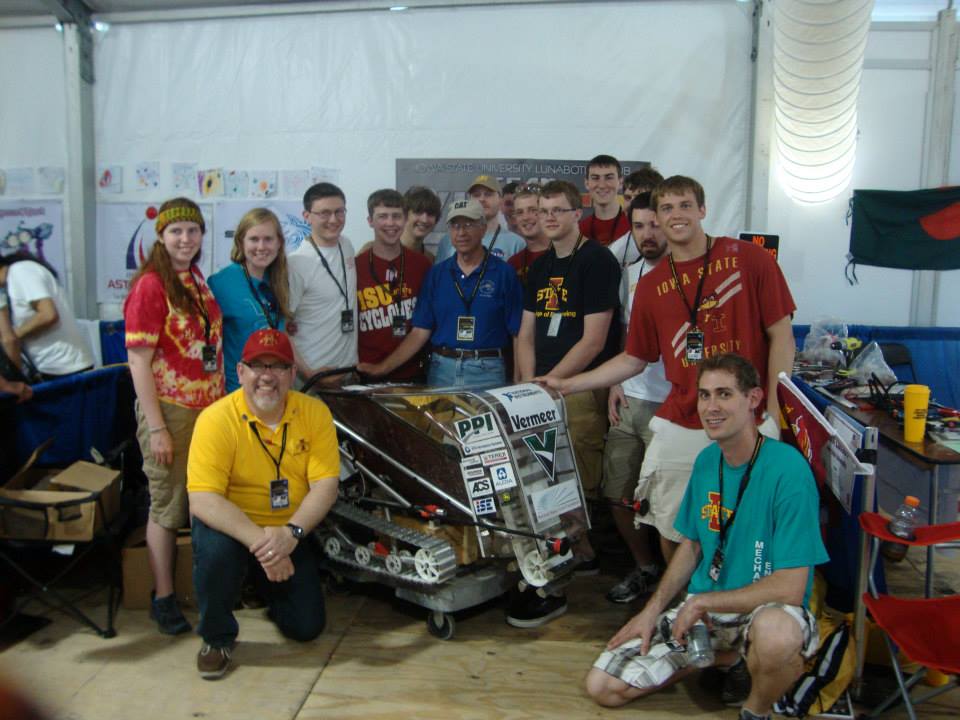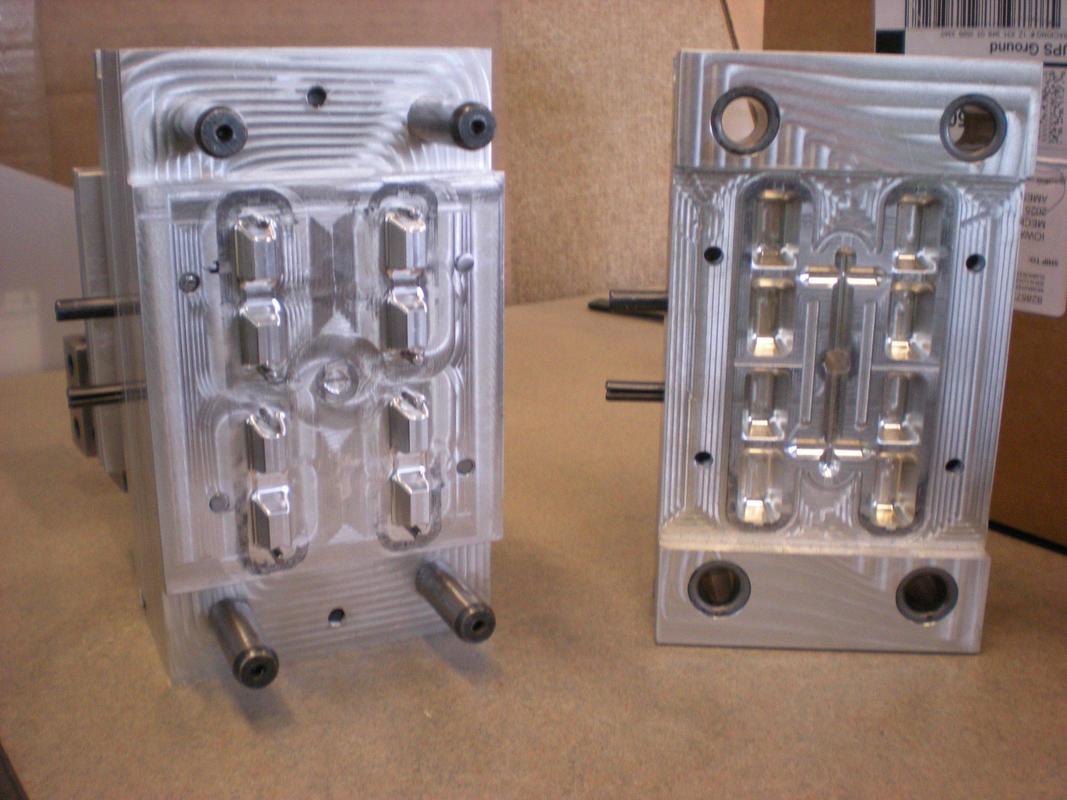NASA Mining - 2013
|
1st Place – Overall (Joe Kosmo Award for Engineering Exellence)
1st Place – On-site Mining Award 3rd Place – STEM Outreach My second year on the team was where I applied the fundamentals I learned from the year prior. The Primary improvements made this year were in weight and autonomy. The billet and rectangular tube frame from 2012 ended up being much heavier than it needed to be. Designed by team member Andrew Klein, the welded tube frame we switched to greatly increased the manufacturing time but significantly saved weight in the process. Kyle White wanted to explore the feasibility of a composite hopper to save weight. The hopper was a kevlar-carbon weave with an aero-mat core. This design saved weight over the year prior but the team's inexperience with composites led to the hopper being overbuilt by a factor of 12, minimizing the potential savings that could be achieved through a composite construction. Full Autonomy has always been out of reach for most teams. This year we developed the core of the autonomy system that would later become the first successful fully autonomous system in the competition's history. Taking the requirements for an autonomy system to it's bare bones, Aren Hill designed a system around entirely around 1's and 0's. All the sensors on the system were binary inputs with tactile sensors detecting the front and far wall and a single beam-break sensor determining where home base was. https://news.engineering.iastate.edu/2013/05/29/team-lunacy-wins-nasa-competition/ |
|
|
|
Injection Mold
|
The drive teeth for the robot were designed to increase efficiency and reduce the complexity of the drive cage. A center rib in the drive cage was added to retain any axial loads, splitting the drive teeth into two mounds.
The teeth were designed to be injection molded and so a mold was needed. Brian Jend did the design work and I completed the majority of the manufacturing with both of us being guided by Andrew Klein. The system was designed for rapid cycling on the BOY 30M injection mold machine on campus. For a full gallery detailing this project - imgur album |

